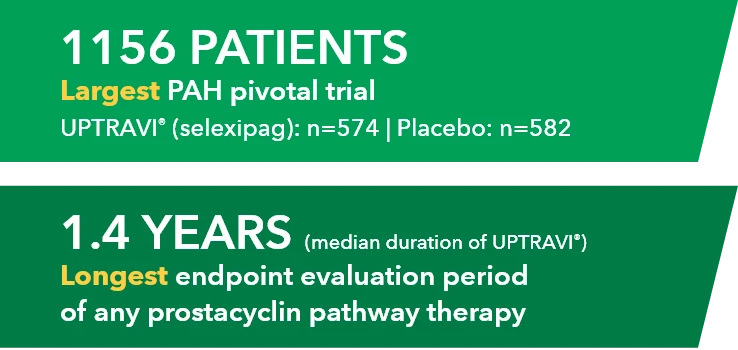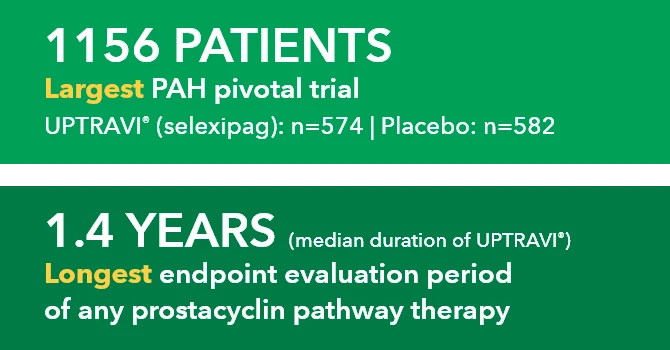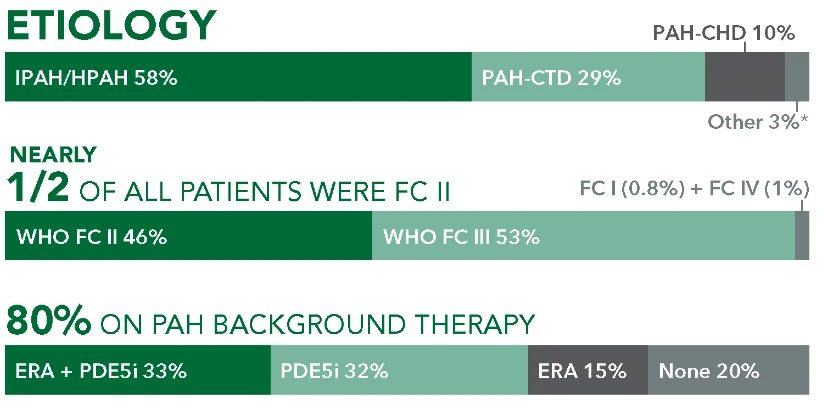
J&J withMe helps verify insurance coverage for your patients, find cost support options for eligible patients, and provide ongoing support to help patients start and stay on prescribed UPTRAVI®.

Care Coordinator
Helps verify insurance coverage. Calls your patient to help them find the resources they may need to get started, including cost support options and coordination with a specialty pharmacy.

Therapy Access Manager (TAM)
Provides education and assistance throughout the payer approval and patient access processes to help your patients access, start, and stay on their prescribed Johnson & Johnson PAH therapy.

PATHwatch® Provider Portal
Sign up or log in at PATHwatch.net, where you can complete and submit the Enrollment and Prescription Form, receive real-time alerts on pending actions, and view shipments for Johnson & Johnson's oral PAH medicines.

If you have questions, call a J&J withMe Care Coordinator at 866-228-3546, Monday–Friday, 8 AM to 8 PM ET.
Multilingual phone support available.
93%
overall approval rate for UPTRAVI® when you enroll patients through J&J withMe1
UPTRAVI® Patient Enrollment Form
Print and fill out the UPTRAVI® Patient Enrollment Form to get your patients started with UPTRAVI®. The Patient Enrollment Form is not optimized for mobile devices. Please print, sign, and fax to J&J withMe.
UPTRAVI® VA Patient Enrollment Form
Note: An alternate form is available for Veteran Affairs (VA) patients.
Guide to the UPTRAVI® Patient Enrollment Form
Download the Guide to the UPTRAVI® Patient Enrollment Form, which provides detailed instructions to help you fill out the form.
Affordability support to help your patients start and stay on the J&J treatment you prescribe
J&J withMe can help you find out what cost support options may be available for your patients taking UPTRAVI®
Support for patients using commercial or private insurance:
- J&J withMe Oral PAH Savings Program allows eligible patients to save on their out-of-pocket medicine costs. Depending on the patient's health insurance plan, savings may apply toward co-pay, co-insurance, or deductible
- Eligible patients pay $5 per prescription fill. Maximum program benefit per calendar year shall apply across all oral PAH therapies in the program
- Not valid for patients using Medicare, Medicaid, or other government-funded programs to pay for their medicines. Offer subject to change or end without notice. Patients may participate without sharing their income information. See program requirements at UPTRAVI.JNJwithMeSavings.com.

Support for patients using government-funded healthcare programs or patients without insurance coverage:
- J&J withMe can provide information about other resources that may be able to help your patients with their out-of-pocket medicine costs
UPTRAVI® Titration Education Program
J&J withMe offers education during the dose adjustment phase of your patient’s treatment.
The UPTRAVI® Titration Education Program is a series of interactions with a Specialty Pharmacy (SP) nurse, delivered to your patient virtually (by video or phone) or in-home, depending on the patient or provider preference.
For your patient to receive this program, you must opt them in to the UPTRAVI® Titration Education Program by checking the box in section 4 (choose virtual or in-home visits) on the Enrollment and Prescription Form.
Within 48 hours of your patient’s receipt of their first UPTRAVI® shipment, an SP Nurse can have an interaction with your patient.
During these visits with your patient, the nurse can:
Educate
the patient on what to expect as they start therapy with UPTRAVI®
Ensure
the patient’s understanding of the importance of reaching their personal dose
Address
concerns the patient may have
Recommend
when they should call you, the treating healthcare professional

Your patients prescribed UPTRAVI® can access the free J&J withMe suite of support, including PAH Companion withMe. PAH Companion withMe provides patients with one-on-one support from a PAH trained professional to guide them on their journey.
The program offers:
- Tools and Resources—May help patients stay on therapy longer2†
- High Satisfaction—94% of patients would recommend the program to others3
- Active Engagement—10,000+ patients have engaged in PAH Companion withMe4
- Bilingual Support—English and Spanish
A dedicated PAH Companion is ready to answer your patients’ questions and help them navigate their treatment experience. Patients who have enrolled can connect with their personal PAH Companion by calling 866-300-1818, Monday–Friday, 8:00 AM to 9:00 PM ET.
*PAH Companion withMe requires a completed patient authorization form to enroll. Eligibility for program components may vary.
†Based on the proportion of patients who engaged in the program versus those who did not engage in the program and were still on therapy 120 days after treatment initiation. Analysis of J&J HUB data derived from specialty pharmacy transactions from 4/1/23 through 3/31/24.
The patient support and resources provided by J&J withMe and PAH Companion withMe are not intended to provide medical advice, replace a treatment plan from the patient’s doctor or nurse, provide case management services, or serve as a reason to prescribe UPTRAVI®.
‡Based on J&J HUB and specialty pharmacy transactions data from 4/1/23 through 3/31/24.
§A statistical analysis to compare the 2 groups was not conducted.







